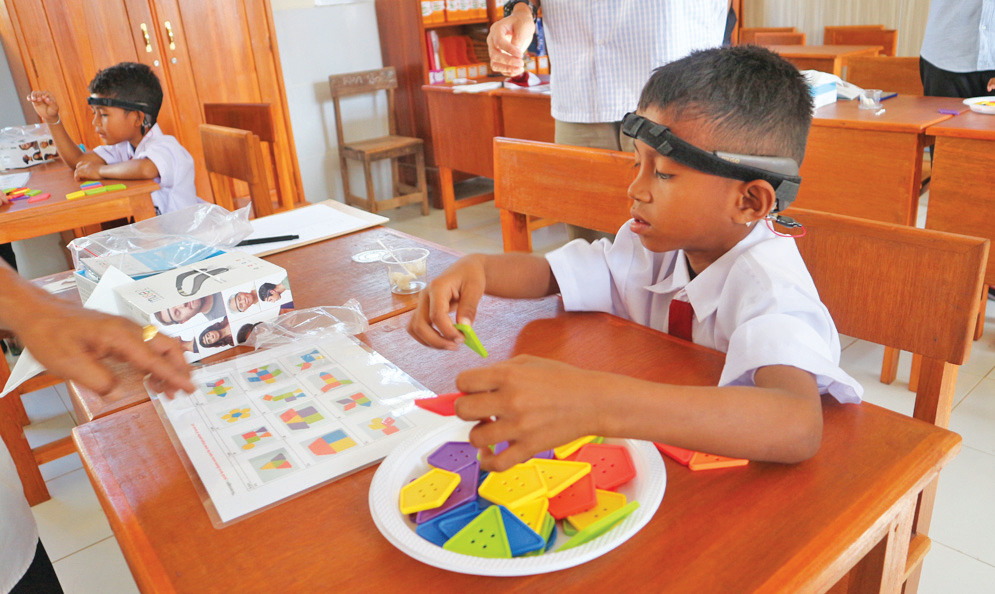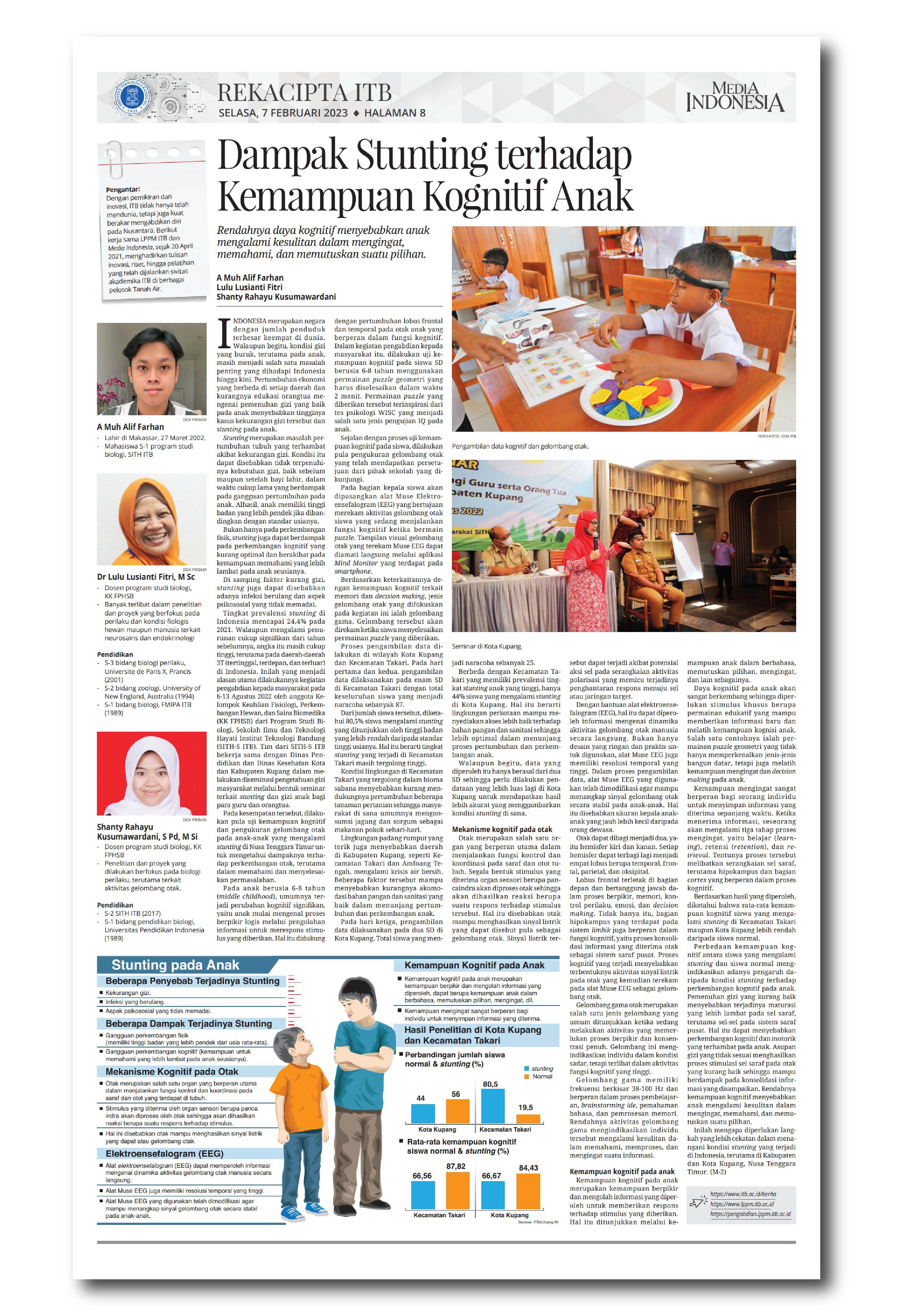Impacts of Stunting on Children's Cognitive Capability in Kupang
By Adi Permana
Editor Adi Permana

BANDUNG, itb.ac.id – Malnutrition, especially in children, is still a severe problem in Indonesia to this day. Economic disparity and lack of parental education on adequate nutrition caused high stunting rates in children. The prevalence rate of stunting in Indonesia hits 24,4% in 2021
Stunting is children's impaired growth and development from prolonged poor nutrition before or after birth. As a result, these children suffer from malnutrition and have shorter body height than other same-aged children. In addition, they experience slower cognitive development and lower comprehension capability than their peers. Stunting can also be caused by repeated sickness and inadequate psychosocial exposure.
This issue pushes the commencement of the community service carried out by the Physiology of Animal Development and Biomedical Science Research Group from the Biology Study Program of ITB SLST. They worked with Kupang Education and Health Agency to organize a seminar on stunting and nutrition for students and parents. During the workshop, the team conducted a cognitive test on children and measured their brainwaves.
This community service was arranged by Dr. Lulu Lusianti Fitri, M.Sc., (Lecturer from ADBSR Research Group), Shanty Rahayu Kusumawardani S.Pd., M.Si (Lecturer from ADBSR Research Group), and A Muh Alif Farhan (Student from Biology Undergraduate Program).
Children 6-8 years old go through significant cognitive changes, in which they start to think logically by processing information from various stimuli. Their cognitive functions are further supported by their temporal and frontal lobe growth.
The team invited 112 elementary school students in Kupang to play geometry puzzles within 2 minutes. They also measure the brainwaves of students from the elementary schools they had permission to visit. Equipped with a Muse Electroencephalogram (EEG) device, students' brain activity is recorded while they solve the puzzle. The wave's visualization was observed directly through the Mind Monitor app.
The results revealed that 80.5% of the students tested in Takari District have stunting. As a savanna, Takari's environment makes it difficult to perform intensive agriculture, and residents must rely on corn and sorghum as staples. Moreover, its hot climate causes frequent droughts from time to time.
Meanwhile, the number of students in Kupang City suffering from stunting was 44%. "The city's environment can be improved to provide better access to food and sanitation. It is more optimal for children's growth and development," the team stated. Albeit the results showed being clear about the situation, the collected data was limited to two elementary schools, so a more extensive collection was needed to obtain a more accurate result.
Cognitive ability tests can measure children's capability to process information and formulate a response to a given stimulus. Based on the collected data, the mental capacity of students with stunting in Takari and Kupang City is lower than average. Malnutrition causes neuron cells to mature slower, especially in the central nervous system. Lower cognitive capability hinders children's ability to remember, understand, and decide.

*This article has been published in ITB Rekacipta rubric of Media Indonesia. The complete article can be read at https://pengabdian.lppm.itb.ac.id
Reporter: Sekar Dianwidi Bisowarno (Bioengineering, 2019)
Translator: Favian Aldilla R (Civil Engineering, 2019)

.jpg)
.jpg)
.jpg)
.jpg)
.jpg)


